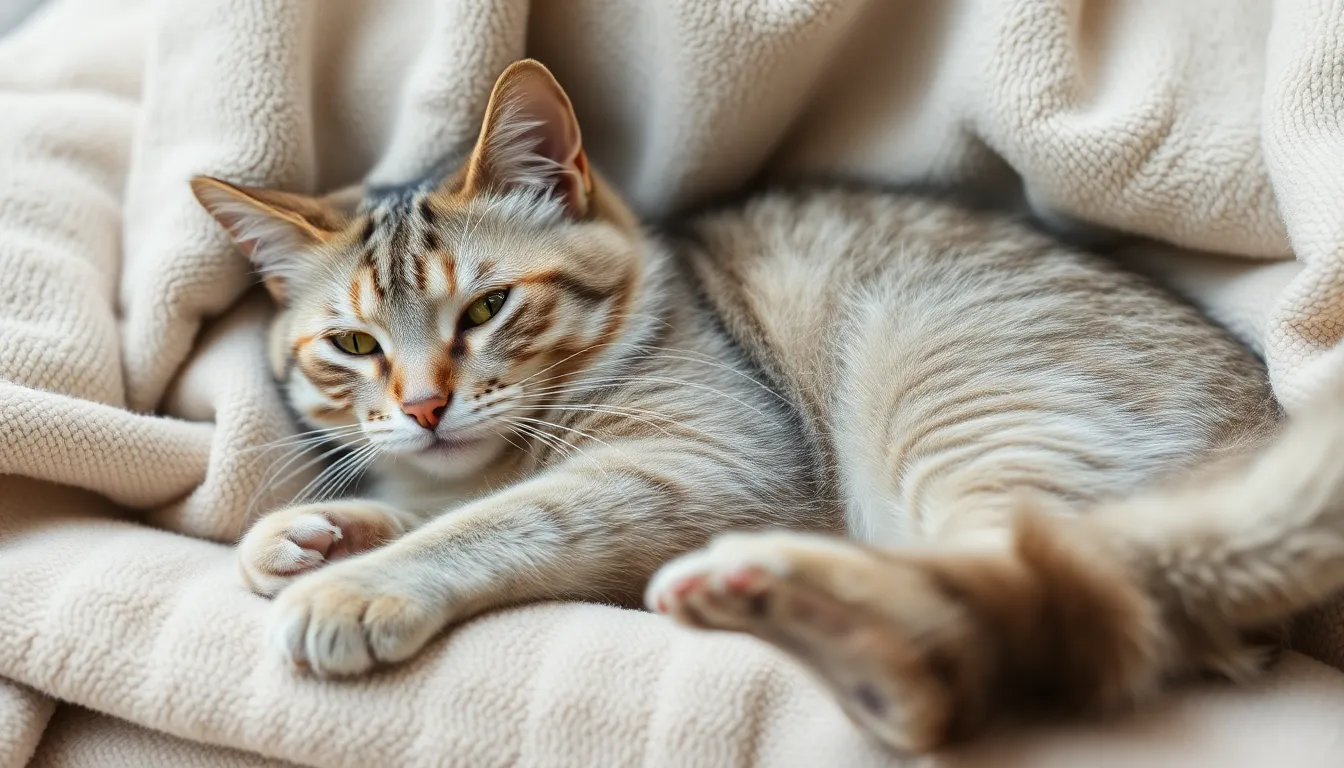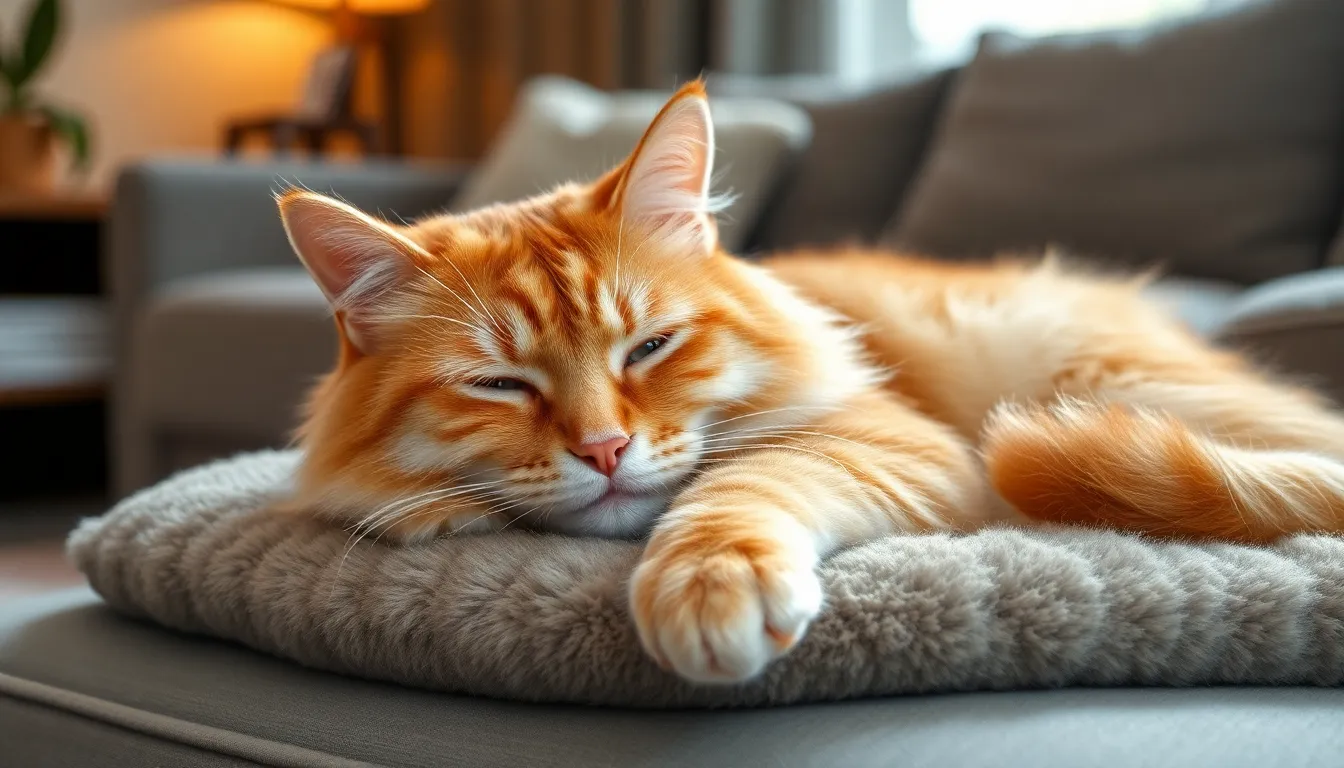Ever wondered how your feline friend’s age stacks up against yours? If you’ve got a 16-year-old cat lounging on your couch, you might be shocked to learn that this lazy ball of fur is practically a senior citizen in cat years. While humans often think in decades, cats operate on a whole different timeline—one that’s a mix of naps, purring, and the occasional laser pointer chase.
Table of Contents
ToggleUnderstanding Cat Years
Cats age differently than humans, which makes understanding their years essential for their care. At 16 years, a cat is considered a senior, experiencing various life changes that affect health and behavior.
What Are Cat Years?
Cat years describe a cat’s age in terms relatable to human life. The first two years of a cat’s life equate to about 24 human years. For each additional year, roughly four human years are added. This formula helps in assessing a cat’s age stage and expected needs. For instance, a 16-year-old cat translates to about 80 human years, emphasizing the need for proper medical care and lifestyle adjustments.
Why Convert Cat Years to Human Years?
Converting cat years to human years aids in understanding a cat’s health and well-being. Owners can recognize significant aging signs and anticipate necessary care adjustments. Understanding this conversion allows for better dietary choices, veterinary visits, and environmental adaptations suitable for senior cats. Different age stages indicate varying energy levels and behaviors, which guide owners in providing a fulfilling life for their aging companions.
The Aging Process of Cats

Cats experience significant changes as they age, particularly noticeable around the 16-year mark. Understanding these changes can enhance the care provided to senior cats.
Physical Changes
Weight loss often occurs as cats transition into their senior years. Muscles may weaken, and joints can become stiff, leading to decreased mobility. Teeth might show signs of wear, which can affect eating habits and oral health. Fur texture may also change, becoming less vibrant. Frequent grooming may be required, as older cats often neglect their grooming routines. Vision and hearing can decline, making them more cautious. Regular veterinary check-ups gain increased importance to monitor these physical transformations.
Behavioral Changes
Behavioral adjustments often reflect changes in a cat’s health. Seniors tend to sleep more, often seeking comfortable, quiet places. Increased vocalization might occur as they try to communicate their needs more vigorously. Some may exhibit signs of anxiety or confusion, particularly in unfamiliar environments. Affection and social interaction patterns may also shift; older cats can become clingy or, conversely, more withdrawn. These behavioral changes signal the need for attentive care and understanding from their owners.
Calculating 16 Years in Cat Years
Understanding how to calculate a cat’s age in human years allows owners to comprehend their pets’ life stages better. Cats age much differently than humans, especially in the first few years.
The Conversion Formula
The formula for converting cat years to human years starts with the first two years. These two years equal about 24 human years combined. Following the second year, each additional cat year counts for approximately four human years. For instance, after 16 cat years, cats reach about 80 human years. This conversion provides insight into aging and necessary care adjustments for senior cats.
What 16 Years Means for Your Cat’s Health
At 16 years old, a cat undergoes significant health changes. Seniors may experience weight loss or muscle weakening, making regular veterinary check-ups vital. Stiff joints often become common, and changes in fur texture may require more grooming. Behavioral shifts can also emerge; cats might sleep more or vocalize differently. Owners should remain attentive to these signs, ensuring their feline companions receive the proper care and support in their golden years.
Common Health Issues at 16 Years
At 16 years, cats face several common health issues that require attention. Recognizing these problems can help owners provide better care for their feline companions.
Dental Problems
Dental problems frequently arise in senior cats. Periodontal disease may affect nearly 70 to 80 percent of cats by age three. Signs include bad breath, difficulty eating, and swollen gums. Regular dental check-ups become crucial in identifying these issues early. Professional cleanings and dental treats can also promote oral health. Owners should maintain a home dental care routine, such as brushing and providing dental toys.
Kidney Disease
Kidney disease is a prevalent concern for cats at this age. Studies indicate that chronic kidney disease affects roughly 30 to 50 percent of cats over 15 years. Symptoms often include increased thirst, frequent urination, and weight loss. Early detection can significantly improve management options. Veterinary visits for blood and urine tests help assess kidney function. Dietary changes, such as low-protein food, can ease the burden on the kidneys, enhancing the cat’s overall quality of life.
Providing Care for Senior Cats
Caring for senior cats involves understanding their specific needs as they age. At 16 years old, cats require more attention to ensure their comfort and health.
Nutrition and Diet
Proper nutrition plays a crucial role in a senior cat’s well-being. Increased protein levels can help maintain muscle mass, while balanced vitamins and minerals support overall health. Owners should opt for high-quality cat food specifically formulated for senior cats, as it meets their unique needs. Additional hydration is vital; providing access to fresh water and considering wet food options can improve hydration levels. Gradually transitioning to new food ensures that digestive systems adjust smoothly. Regularly monitoring your cat’s weight and appetite also helps identify potential health issues early on.
Regular Vet Check-ups
Routine veterinary visits are essential in managing the health of senior cats. A vet can perform comprehensive health assessments, including dental evaluations and kidney function tests. Annual check-ups become critical at this age, as many health issues manifest during these years. Early detection of ailments such as dental disease and kidney problems significantly improves treatment outcomes. Keeping track of any changes in behavior or physical condition can provide useful information for the vet. Maintaining an open line of communication with the veterinarian ensures timely adjustments to care and treatment.
Caring for a 16-year-old cat requires understanding the unique challenges that come with aging. Recognizing the signs of aging and adapting care routines can significantly enhance the quality of life for senior cats. By prioritizing regular veterinary visits and providing specialized nutrition, owners can ensure their feline companions remain healthy and comfortable.
With a little extra attention and love, these senior cats can continue to thrive in their golden years. Embracing the changes that come with age allows for a deeper bond and a fulfilling life for both the cat and its owner.







